Posts Tagged ‘Military’
Explore the design of the 80th Anniversary D-Day Coins
This year marks the 80th anniversary of D-Day, a day which many historians say turned the tide of World War 2. To honour the courage and sacrifice of the thousands of men and women involved, a special coin range has been released. The main coin design showcases three powerful features: the Spitfire Mk IX, HMS Warspite, and the Sherman Firefly Tank.
Click here to view the brand new coin range commemorating the 80th anniversary of D-Day.
The Sherman Firefly Tank, an upgraded version of the standard Sherman, was a critical component of the Allied armoured divisions landing on the beaches of Normandy.
Explore more about the Sherman Firefly – Watch Our Sherman Firefly Video Now
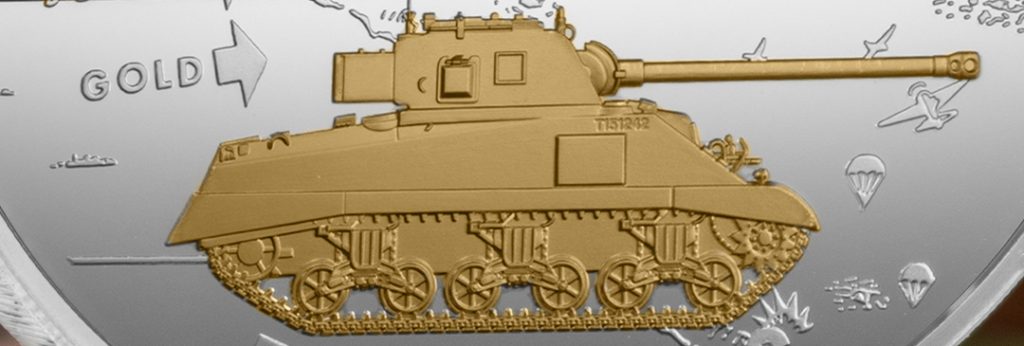
A veteran battleship with a vast history, HMS Warspite steamed into the waters off Normandy to unleash its formidable firepower. During the Normandy landings Warspite was the very first ship to fire upon German coastal defences with its heavy artillery.
Discover HMS Warspite’s Remarkable Story – Watch the HMS Warspite Video Now
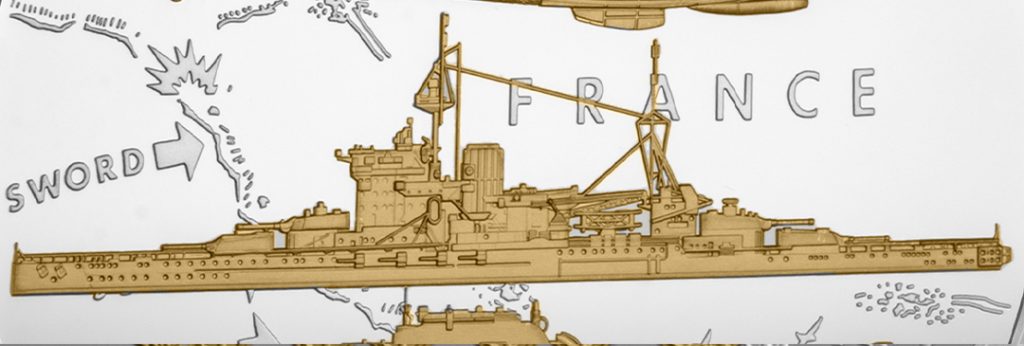
The Spitfire MK IX, a legendary aircraft synonymous with the Royal Air Force, played a crucial role in the Normandy landings. Designed for speed and agility, the Spitfire provided essential air cover during Operation Overlord.
Uncover more about the role of the Spitfire MK IX – Watch the Spitfire MK IX Video Now
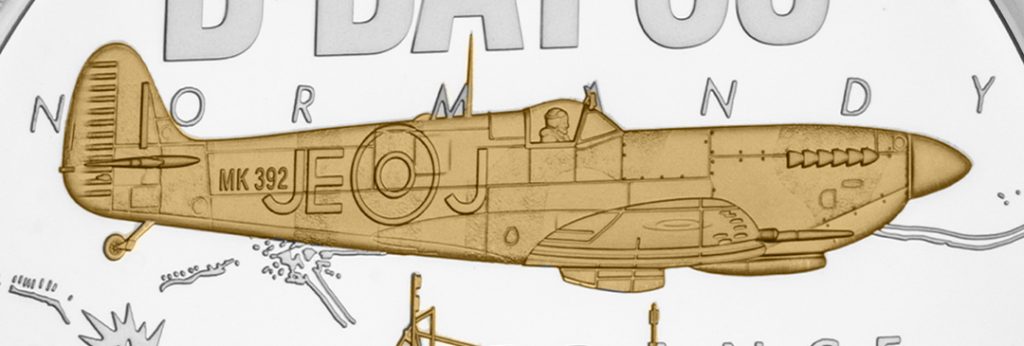
Map of Normandy/France:
The background design features a detailed map of Normandy, with a special focus on the historic beaches of Gold and Sword. These beaches witnessed some of the fiercest fighting on D-Day, as Allied forces sought to establish a crucial foothold on continental Europe. The map design highlights the strategic significance of these locations in the overall success of the Normandy landings.
The Spitfire Mk IX, HMS Warspite, and the Sherman Firefly Tank, along with the map of Normandy, come together on this coin design to tell a powerful story of unity, courage, and the triumph of good over evil.
Click here to view the brand new coin range commemorating the 80th anniversary of D-Day.
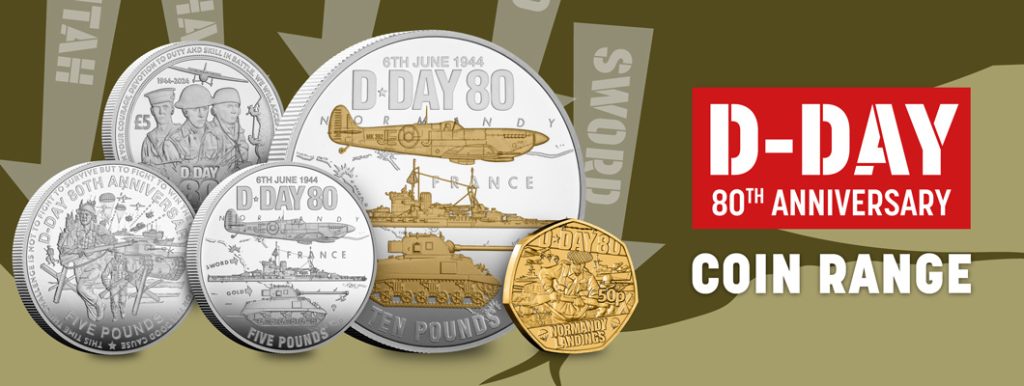
We strive for historical accuracy in our content. If you notice any inaccuracies, please let us know. Your feedback will help us maintain and improve the integrity and accuracy of our information.
Guardians of the Normandy Sky
Click here to view the brand new 80th anniversary of D-Day coin range featured in this video
The Supermarine Spitfire MK IX carved its name in history with its pivotal role during the D-Day landings on June 6, 1944. This aircraft was a marvel of British engineering, an advanced version of the famed Spitfire series, designed to match the German Focke-Wulf FW 190.
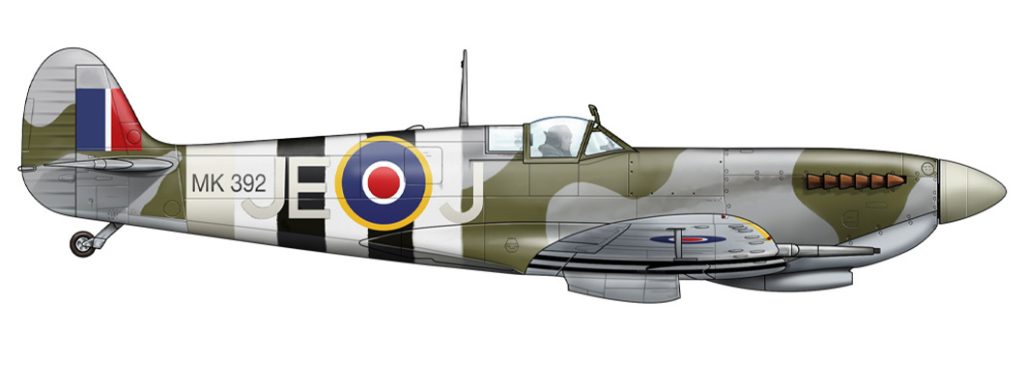
As the Allies undertook the monumental task of liberating Nazi-occupied Europe, the Spitfire MK IX soared above the beaches of Normandy, safeguarding the troops against enemy air attacks. Its iconic Merlin engine provided the power needed to dominate the skies at high altitudes, where dogfights with German fighters were a frequent challenge.

The Spitfire’s duties were not limited to aerial combat. The MK IX Spitfires were crucial in reconnaissance, capturing images of the battlefield that informed Allied strategy. They also strafed and bombed German defensive positions, disrupting enemy fortifications and support.
The presence of the Spitfire MK IX over the Normandy beaches was a reassurance to the Allied soldiers below and a testament to the aircraft’s enduring legacy. On D-Day, it was more than a fighter, it was a protector, an eye in the sky, and a symbol of hope.
Click here to view the other key elements featured on the D-Day 80th Anniversary coin design.
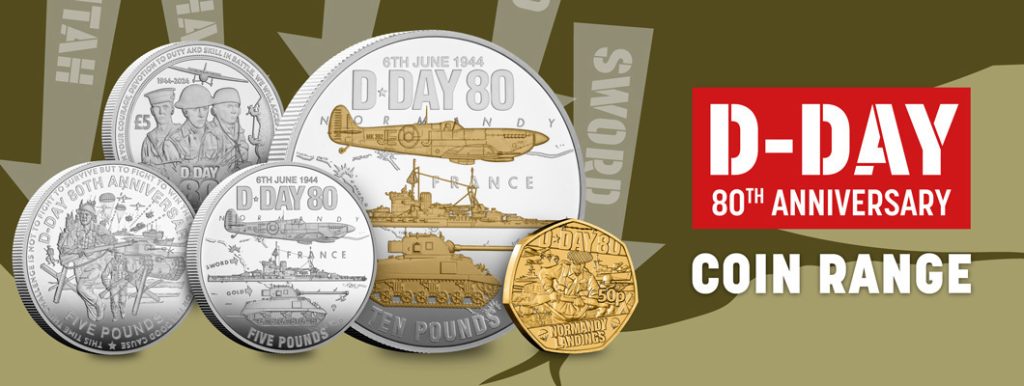
We strive for historical accuracy in our content. If you notice any inaccuracies, please let us know. Your feedback will help us maintain and improve the integrity and accuracy of our information.
HMS Warspite: The First Battleship to Open Fire on D-Day
Click here to view the brand new 80th anniversary of D-Day coin range featured in this video.
As the dawn of June 6, 1944, broke over the Normandy coast, a monumental chapter in world history was being written. D-Day, the largest seaborne invasion in history, was about to commence. Included among the vast Allied fleet assembled for Operation Overlord, the HMS Warspite, an experienced British battleship. It was on this historic day that the Warspite became the first battleship to open fire, marking the beginning of a crucial chapter in the liberation of Europe.
The Pride of the Royal Navy: HMS Warspite
HMS Warspite, a Queen Elizabeth-class battleship, was launched in 1913, she had already earned her place in naval legend through her service in both World Wars. By the time of D-Day, Warspite had been in service for over three decades, witnessing the evolution of naval warfare from the dreadnought era to the age of aircraft carriers and submarines.

Warspite’s Role on D-Day
As part of the bombardment force during the Normandy invasion, Warspite had a crucial role. She was tasked with softening the German defenses along the coast to aid the landing of Allied troops on the beaches. Positioned off Sword Beach, one of the five designated landing areas, Warspite’s guns were ideally situated to provide critical support.
The First Shot
In the early hours of June 6, Warspite made history as the first battleship to open fire against German fortifications. This act signified more than just a military manoeuvre; it was a symbol of the Allied determination to reclaim Europe from the clutches of Nazi occupation.
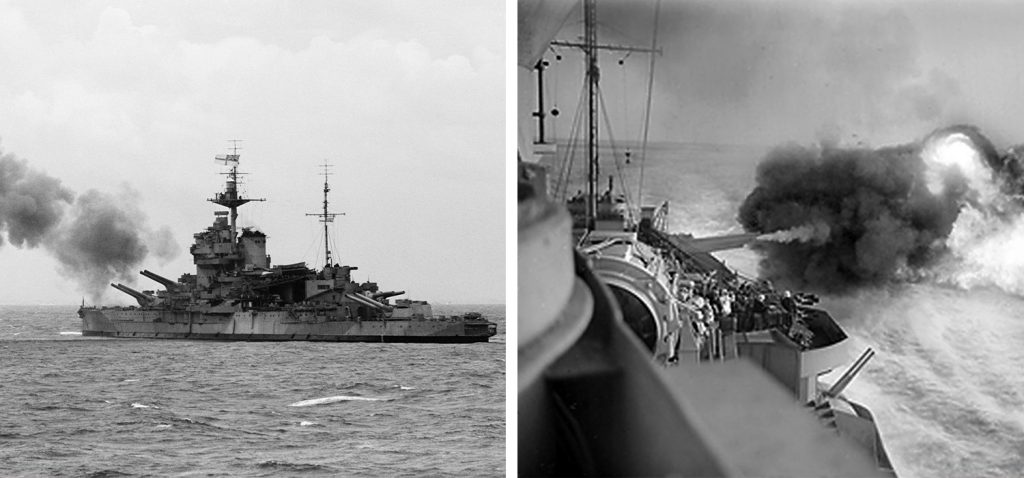
Precision Bombardment
Equipped with eight 15-inch guns, Warspite was a formidable force. Her firepower was not just about brute force; it was precise. Warspite’s gunnery crew, seasoned by years of conflict, were experts at long-range bombardment. Their accuracy was critical in minimising collateral damage and ensuring the success of the landings. Despite being one of the oldest battleships in service, Warspite proved that she was still a force to be reckoned with.
Click here to view the other key elements featured on the D-Day 80th Anniversary coin design.
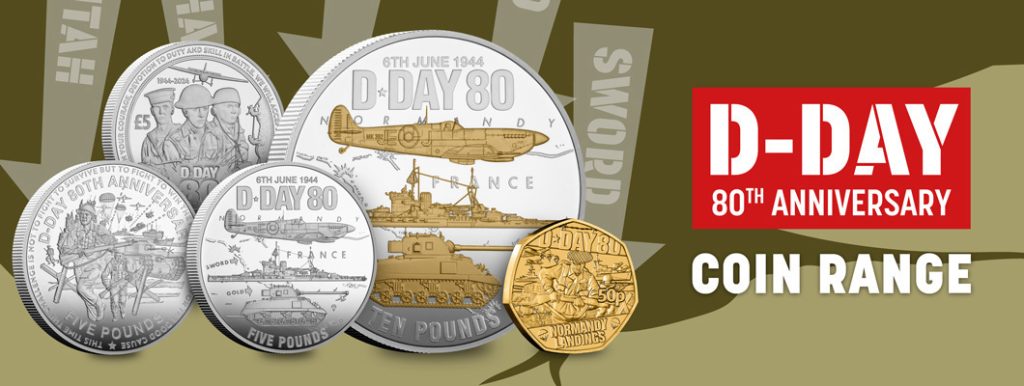
We strive for historical accuracy in our content. If you notice any inaccuracies, please let us know. Your feedback will help us maintain and improve the integrity and accuracy of our information.
